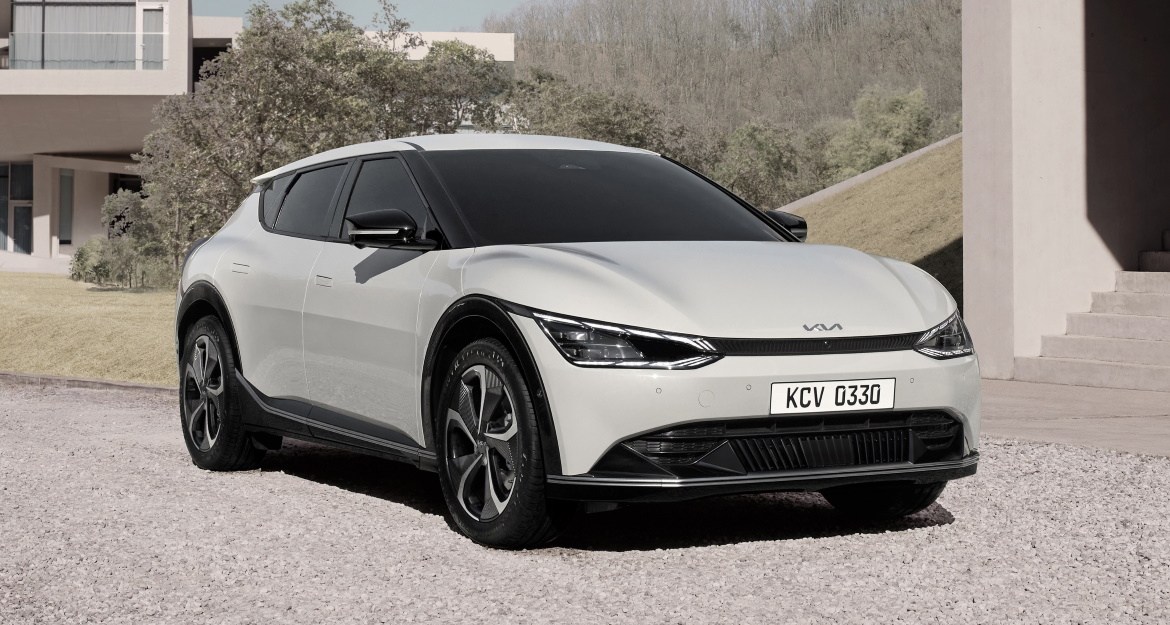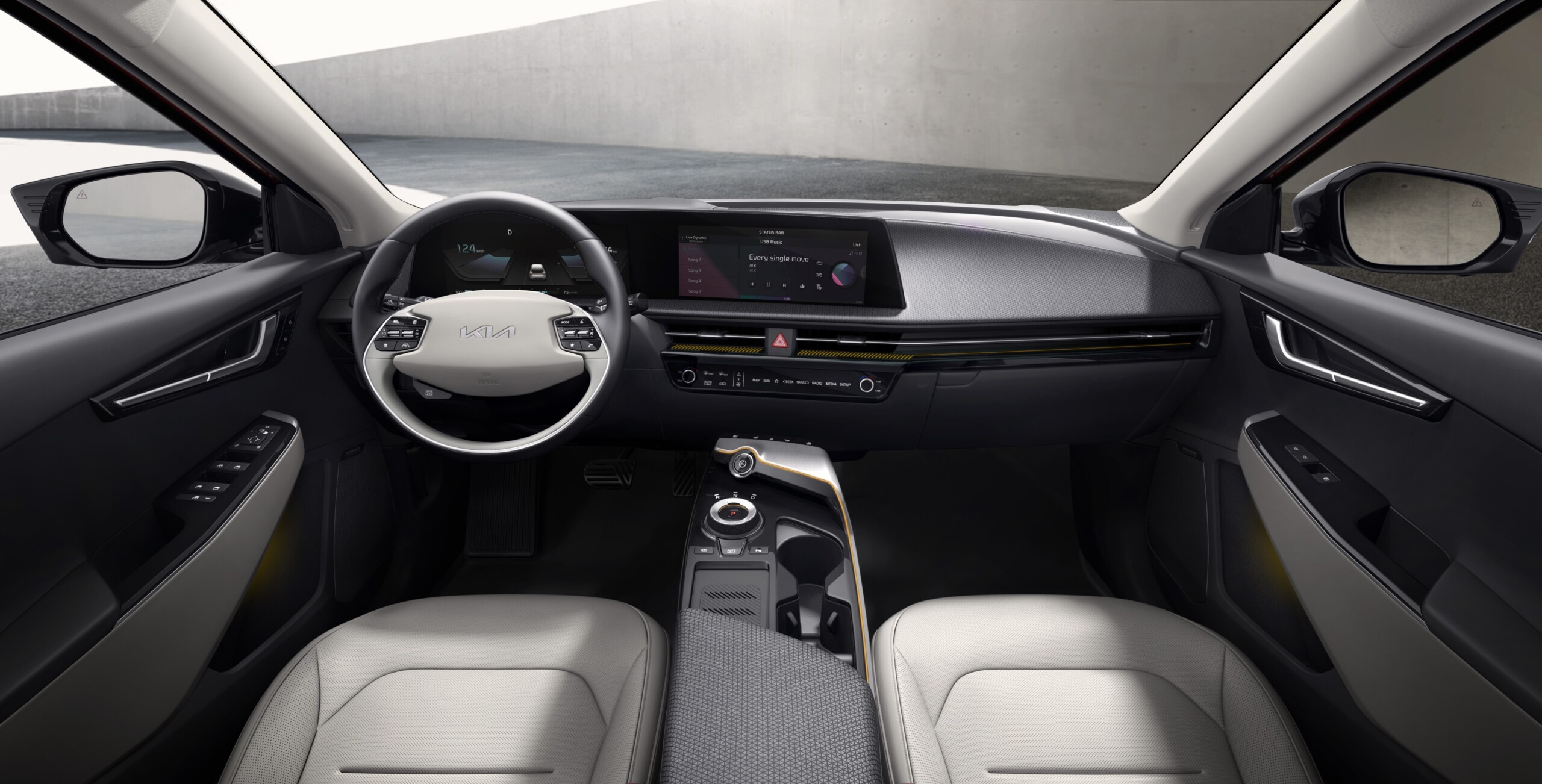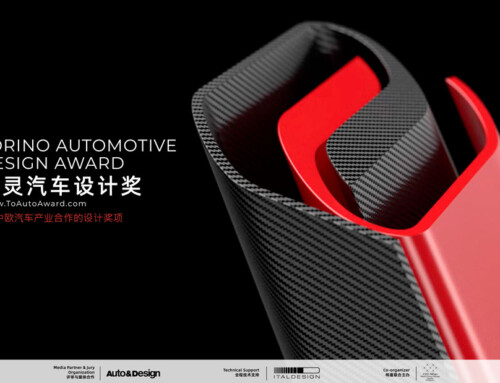Kia has unveiled the first images of the EV6, the Korean manufacturer’s first electric car built on the new E-GMP platform for battery-powered cars. EV6 has been designed following the brand’s new ‘Opposites United’ styling philosophy, which takes inspiration from the contrasts found in nature. “EV6 is a manifesto of progressive human-centred design for us. We firmly believe that EV6 is a compelling and relevant model for the new electric car market,” says Karim Habib, Senior Vice President and Head of the Global Design Center. The car is the result of collaboration between Kia’s design centres in Namyang (Korea), Frankfurt (Germany) and Irvine (California, USA).
“With the EV6, we aimed to create a distinctive and impactful design using a combination of sophisticated and high-tech features on pure, rich volumes”. The ‘Opposites United’ design philosophy will influence the styling of all future models from the Korean manufacturer. The philosophy is based on five key design pillars: Bold for Nature, interaction with nature; Joy for Reason, union of emotionality and rationality; Power to Progress, power and progress; Technology for Life, new technologies and innovations to foster positive interactions between humans and machines; and Tension for Serenity, tension between opposing forces and creative contrasts.
At the front, the characteristic daytime running lights show an elegant and modern appearance, creating the ‘Digital Tiger Face’, an evolution for electric cars of the ‘Tiger Nose Grille’, the typical frontal styling that has characterised the Korean manufacturer’s cars for some years now. At the bottom there is an air intake that visually widens the front of the car, accentuating its high-tech image. The side profile has a crossover-inspired look, while the black C pillar further lengthens the side and reaches the rear, characterised by a single line of LEDs that extends across the entire width of the EV6.
The interior has been designed around the concepts of minimalism and high technology. Among the most striking elements is the large curved display that incorporates the instrumentation in front of the driver and the infotainment system in the central part. Further down, the designers decided to keep the physical buttons for the air conditioning, “to increase ergonomics and create a relaxing driving experience”.














